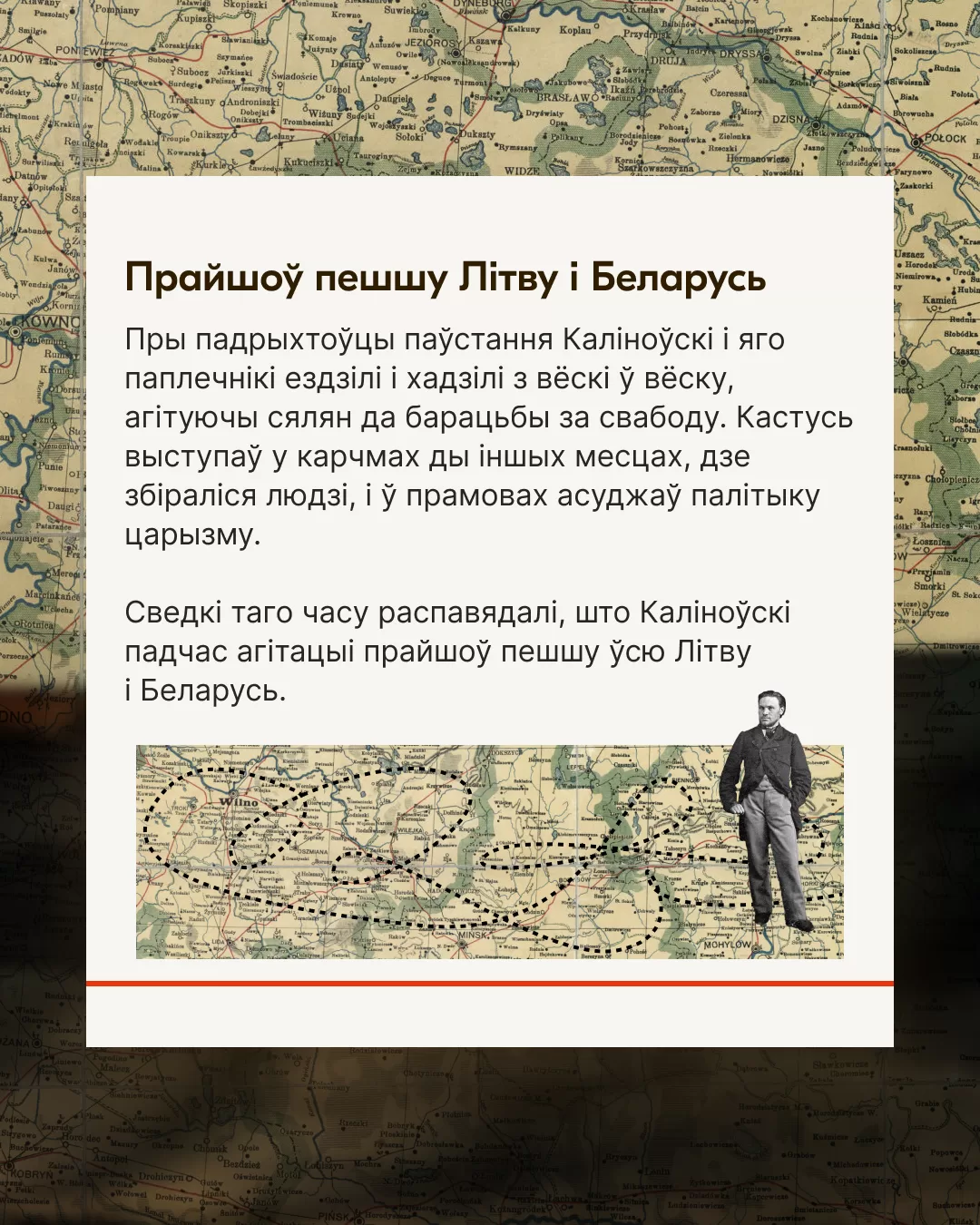On the anniversary of the day Kastus Kalinouski was born, Sviatlana Tsikhanouskaya’s team shares interesting facts about Belarus’ national hero that you may not be aware of.
Sviatlana Tsikhanouskaya: “The importance of Kastus Kalinouski’s figure for us and our history cannot be overstated. His deeds are an example of how one person managed to inspire thousands to respect their dignity, defend their language and culture, and fight for freedom. We live in a time when Belarusians face the same threats faced by Kalinouski’s contemporaries. That is why we must not forget the lessons of the 1863-1864 Uprising that Belarusians learned as a nation”.
- Walked on foot across entire Lithuania and Belarus
During the preparations for the uprising, Kalinouski and his associates traveled from village to village, urging peasants to fight for freedom. Kalinouski spoke in taverns and other gathering places, condemning the policies of Russian tsarism. Witnesses of that time reported that Kalinouski walked on foot through the entire Lithuania and Belarus during his campaign.
- Muzhytskaya Prauda was the first illegal revolutionary newspaper in the Belarusian language written in Latin alphabet
Muzhytskaya Prauda (Peasants’ Truth) was distributed as a regular leaflet, scattered on the streets of villages, and even read aloud in front of people. Kalinouski was actively involved in this despite the great risks. After he distributed the third issue of the newspaper on postal horses in the village of Sheiniaki outside Slonim in October 1862, the police started following him. Kalinouski had to hide and use various pseudonyms.
- Knew several languages
Kalinouski mastered the Belarusian language perfectly. Historians believe this was because he disliked his stepmother and spent a lot of time with peasant children who spoke Belarusian. In the Svislach Gymnasium, which bore Kalinouski’s name until 2023, he studied Latin, German, and French. He also had a good command of the Russian language, even working as a tutor in Vilnius during the 1863 Uprising.
- Had to spend huge money on letters to his beloved
During his imprisonment in 1864, Kastus Kalinouski and his beloved Marysia Yamant maintained communication through secret correspondence. Marysia was in a building across from the prison. With the help of her aunt, Yadwiha Makrytskaya, who bribed the gendarmes, they managed to send each other letters, each one for 10 rubles. Those letters are a valuable source for researchers of the 1863-1864 uprising.
- Had different forms of his name
Historians believe that his friends and family might have used the form “Kanstantsin” as a nickname, while in official documents, Kalinouski signed as “Vincent”. In “Pamiatsi Spraviadlivaha”, Vaclau Lastouski refers to him as “Kastsiuk”. The name “Kastus” resounded in lectures at the Belarusian State University and solidified thanks to the Belarusian State Theatre, which showed the play “Kastus Kalinouski” by director Yauhen Mirovich 10 times in the 1923 season alone.















